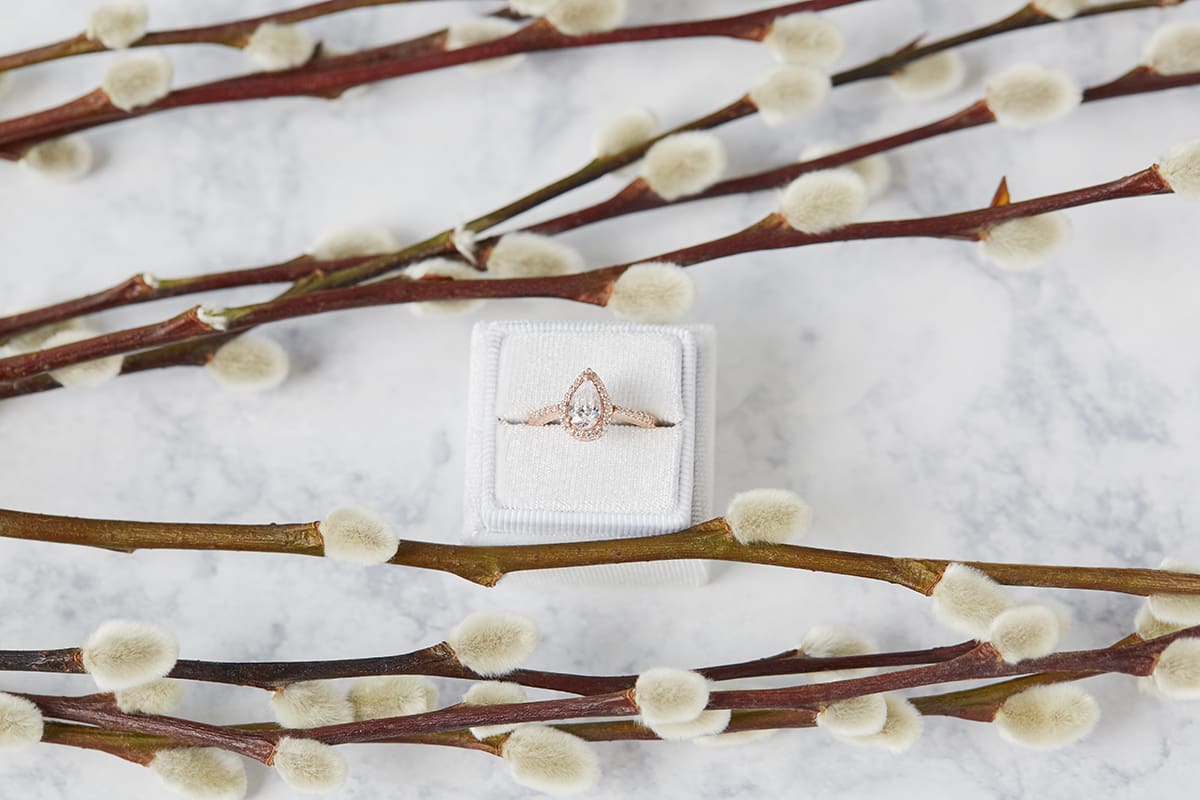It seems like every day there’s a new technological advancement. From artificial intelligence to smart cars, the rate at which new developments are being made is truly inspiring. So it should come as no surprise that technology has finally caught up with an industry that has stayed in the dusty, cobweb-filled shadows for many years: the diamond industry.
Up until a few years ago, the only option available for a diamond engagement ring was one that was dug or blasted out of the earth — processes that are often accompanied by unethical practices and shady overseas business deals. Women’s hands all over the world were tainted with “blood diamonds,” but unless they and their partners wanted to give up the option of a diamond ring, there really was no other choice. That is, until the technology around lab-made diamonds leveled up to its full potential: the ability to create engagement ring–worthy diamonds with the same chemical, physical and optical characteristics as those found in the earth or below the sea.
An Industry Leader
Alexander Weindling, the founder and CEO of Clean Origin, is one of the early adopters of lab-grown diamonds. He is a third generation jeweler who believes in creating diamonds with timeless integrity that pays homage to the tradition of jewelry buying. And when you talk with him, you can feel the passion he has for these 100% ethically sourced stones.
When looking at the unique process, the endless style options and the sustainable nature of these diamonds, it’s easy to see why so many (particularly millennials) have chosen to go with lab-created diamonds. Weindling lays out some of the perks of lab-created diamonds:
• You can purchase a lab-grown diamond of the exact same quality as a mined diamond for far less money.
• You can also purchase a much larger and/or better quality lab-grown diamond at a much better rate than a mined diamond.
• You can be 100% sure your lab-grown diamond is conflict-free.
• You can rest assured knowing you are on the right side of history.
In a time when our planet is more fragile than ever, Clean Origin believes in revealing the truth of how mining diamonds impacts our environment. “As much as 75 tons of earth must be displaced to produce one carat of gem-quality diamonds,” says Weindling. “The mining industry also creates open pits and craters that are more than 2,000 feet deep and nearly 4,000 feet in diameter that can be visibly seen from the atmosphere.”
The Science Behind It
The science behind manmade diamonds is quite fascinating. The labs where they’re grown have recreated the conditions that carbon experiences when it becomes a diamond underground — basically the perfect combination of high heat and high pressure.
“Depending on the size and the growing process, it can be as much as 90 days from conception through cutting, polishing and finally certification,” Weindling explains when asked how long the entire process takes.
It’s also important to note that lab-grown diamonds go through the same certification process as mined diamonds. Many people don’t realize that these stones still come in a wide variety of cuts, colors and clarity — all of which you select when finding the perfect ethical diamond.
The biggest difference in the two types of diamonds? The price. As Weindling explains, you can get a bigger or better diamond because lab-created diamonds are 20% to 40% less expensive than their mined counterparts. That means your partner’s dream of a 2-carat ring just became a 2.5-carat ring for the same budget you originally set.
About Clean Origin
A pioneer in the global diamond industry, Clean Origin marries unique artistry with unmatched customer service, putting the company a step ahead of the rest. Its competitive pricing, 100-day return policy and free shipping comes with every purchase, but the company’s dedication to the future of our planet is what truly sets Clean Origin apart.






